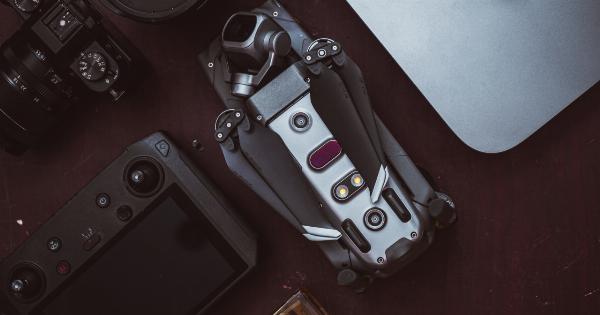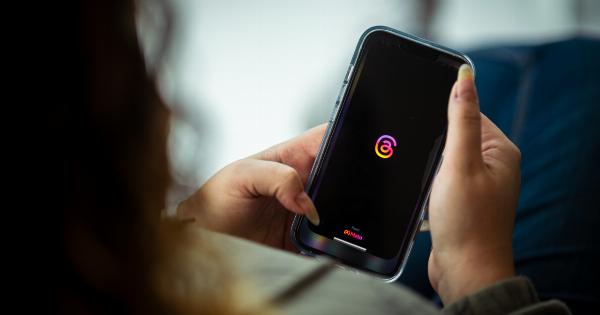In our daily interactions, we often find ourselves in situations where we need to determine whether someone is telling the truth or not. Detecting lies can be a challenging task, as dishonest individuals have become adept at masking their deception.
However, one tool that can prove highly effective in this endeavor is our innate ability to trust our gut instincts. In this article, we will explore how trusting our gut can be a foolproof way to detect lies.
The Science Behind Our Gut Instinct
Trusting our gut, or relying on intuition, is a phenomenon that has been studied extensively by psychologists and neuroscientists.
Our gut instinct is believed to be the result of our brain processing a vast amount of information in a fraction of a second, subconsciously analyzing patterns, body language, and incongruities that may signal deception.
Research has shown that our gut instincts are often accurate, as they tap into our intuitive wisdom.
One study conducted by researchers at the University of California, Berkeley, found that participants who trusted their gut instinct performed better in lie detection tasks compared to those who relied solely on conscious reasoning.
Recognizing Facial Microexpressions
One of the key aspects of detecting lies is the ability to read facial expressions. While individuals may try to control their facial expressions consciously, microexpressions are rapid, involuntary facial movements that reveal true emotions.
These microexpressions can occur for just a fraction of a second, making them difficult to notice without heightened intuition.
Trusting our gut allows us to pick up on these subtle cues, helping us decipher the truth from the deception.
By being attuned to the microexpressions of others, we can identify hints of anxiety, fear, or even dishonesty that might be hidden beneath a calm facade.
Understanding Body Language
Alongside facial microexpressions, body language also plays a vital role in detecting lies. Nonverbal cues such as posture, gestures, and eye movements can provide crucial information about a person’s true intentions.
Trusting our gut enables us to subconsciously process these signals and interpret them accurately. For instance, avoiding eye contact or fidgeting may suggest discomfort or unease, indicating a potential lie.
On the other hand, someone who overly exaggerates their movements or appears overly calm and composed might also be concealing the truth.
Listening to Verbal Cues
While body language and facial expressions are essential, verbal cues should not be overlooked. Our gut instincts can guide us to pay attention to specific verbal patterns or inconsistencies in speech that might indicate deception.
For example, a person who frequently uses qualifiers or overly detailed explanations may be attempting to deceive. On the contrary, abrupt changes in tone or sudden defensiveness may also be indications of a lie.
Trusting Your Intuition
Trusting our gut instinct relies on sharpening our intuition and learning to differentiate between genuine signals and false alarms. It is important to note that our gut instincts are not infallible and can be influenced by biases or personal beliefs.
Therefore, it is crucial to integrate our gut feelings with a logical and rational assessment of the situation at hand.
By combining intuition with analytical thinking, we can maximize our lie-detection abilities while minimizing the chances of misjudgment.
The Importance of Context
When relying on our intuition, we must consider the context of the situation. Factors such as cultural differences, familiarity with the person, and the surrounding environment can influence our gut instincts and subsequent interpretation of cues.
For instance, certain cultures may encourage more direct eye contact, while others might interpret it as a sign of disrespect or dishonesty.
Being mindful of these contextual nuances allows us to adjust our lie-detection skills accordingly, ensuring more accurate assessments.
Developing Your Gut Instincts
Fortunately, trusting our gut instinct is a skill that can be honed and developed over time. Here are a few strategies to strengthen your intuition:.
1. Reflect on Past Experiences
Take time to reflect on instances where your gut feelings were accurate and those where they led you astray. By examining these experiences, you can identify patterns and learn from them, refining your intuition further.
2. Practice Mindfulness
Mindfulness meditation and exercises can enhance self-awareness and attunement to your own emotions. By regularly practicing mindfulness, you become more in tune with your gut feelings and better equipped to rely on them in lie-detection scenarios.
3. Observe Others
Engage in people-watching and observe the behavior of individuals around you. Try to decipher their emotions and intentions based on their nonverbal cues and expressions.
This practice can train your intuition to recognize deceptive behaviors more effectively.
4. Learn from Experts
Read books or attend workshops on body language, microexpressions, and lie detection. Experts in these fields can provide valuable insights and techniques to sharpen your lie-detection skills.
Conclusion
Trusting our gut instinct is a powerful tool that can aid us in detecting lies. By harnessing our innate ability to read facial microexpressions, interpret body language, and listen to verbal cues, we can increase our success in identifying dishonesty.
However, it is essential to remember that our gut feelings should be complemented by logical reasoning and consideration of contextual factors to ensure accurate lie detection. With practice and mindfulness, we can enhance our intuition and become more adept at discerning truth from deception.






























